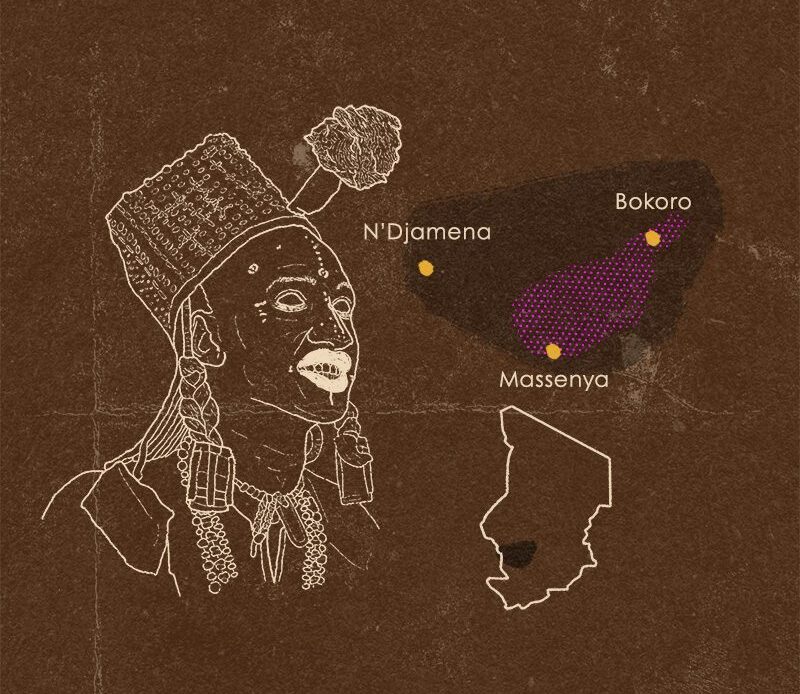
We’ve all heard of cultural festivals, but have you ever encountered a courtship ritual so mesmerizing and unique that it seems almost out of this world? The Gerewol Festival of the Wodaabe people in Chad is one such extraordinary event. Every year, when the rainy season draws to a close, this nomadic community celebrates love, beauty, and endurance in one of the most fascinating ways imaginable.
At first glance, it might appear as a beauty pageant for men. But the Gerewol is far more than just a showcase of looks—it’s a dazzling, week-long courtship ritual where men compete to be chosen by marriageable women through their beauty, stamina, and patience. What makes it even more captivating is that the men’s concept of beauty, by Western standards, may seem effeminate. However, in Wodaabe culture, beauty is central to a man’s desirability, and the men go all out to showcase their most stunning features.
Who Are the Wodaabe?
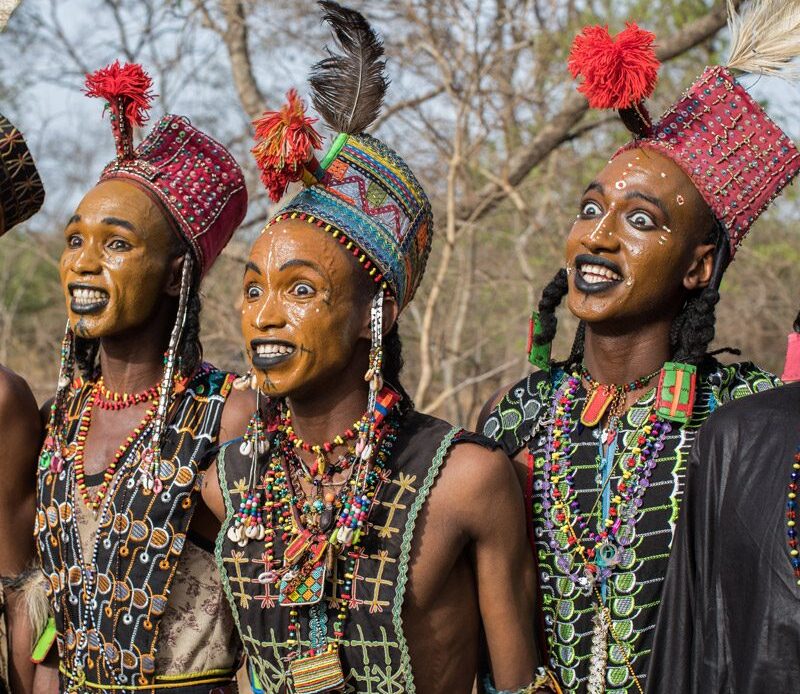
The Wodaabe are part of the Fulani ethnic group, a nomadic community spread across Chad, Niger, Nigeria, and other parts of Central Africa. Known as the “People of the Taboo,” the Wodaabe are one of the last nomadic tribes in the world. Their life revolves around cattle herding, with their nomadic lifestyle being dictated by the need to find fresh grass and water for their livestock. For the Wodaabe, beauty, patience, and resilience are among the core values displayed in full force during the Gerewol festival.
Read: Akwa Ibom to Host the 2024 ECOWAS Food and Cultural Festival
The Beauty of the Gerewol Festival
At the Gerewol, Wodaabe men adorn themselves in elaborate costumes, paint their faces, and practice intricate dance routines, all to win the attention and approval of the women in their community. Physical beauty, as defined by the Wodaabe, includes tall height, a lean physique, symmetrical facial features, white teeth, and bright eyes. Men will spend hours preparing their appearance, with the most important tool being a mirror—proof of how seriously beauty is taken in this culture.
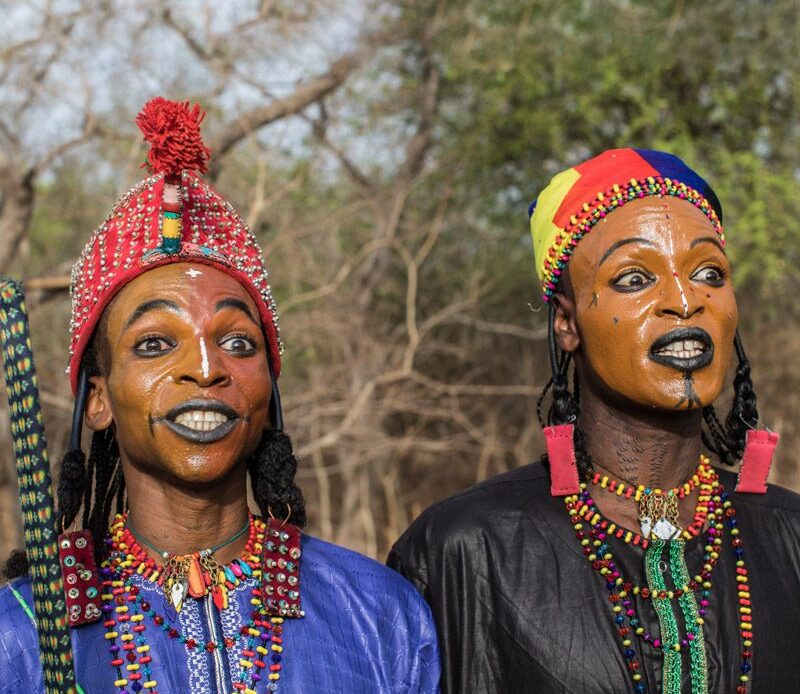
Scarification, which represents tribal affiliation, strength, and bravery, also affects their aesthetics. Over time, men make small scarifications on their faces and bodies, mixing ash into fresh wounds to create dark, raised tattoos that are both a mark of beauty and valor.
The Dance of Love: Yakee
At the festival’s heart is a hypnotic dance called Yakee, where the men form a line and begin their repetitive chants and graceful movements. The dance is meant to show off their beauty—especially their white teeth and eyes—as they smile wide and open their eyes to appear more desirable. The dancers’ endurance and dedication are tested, as the ritual can continue for hours under the scorching heat of the desert sun.
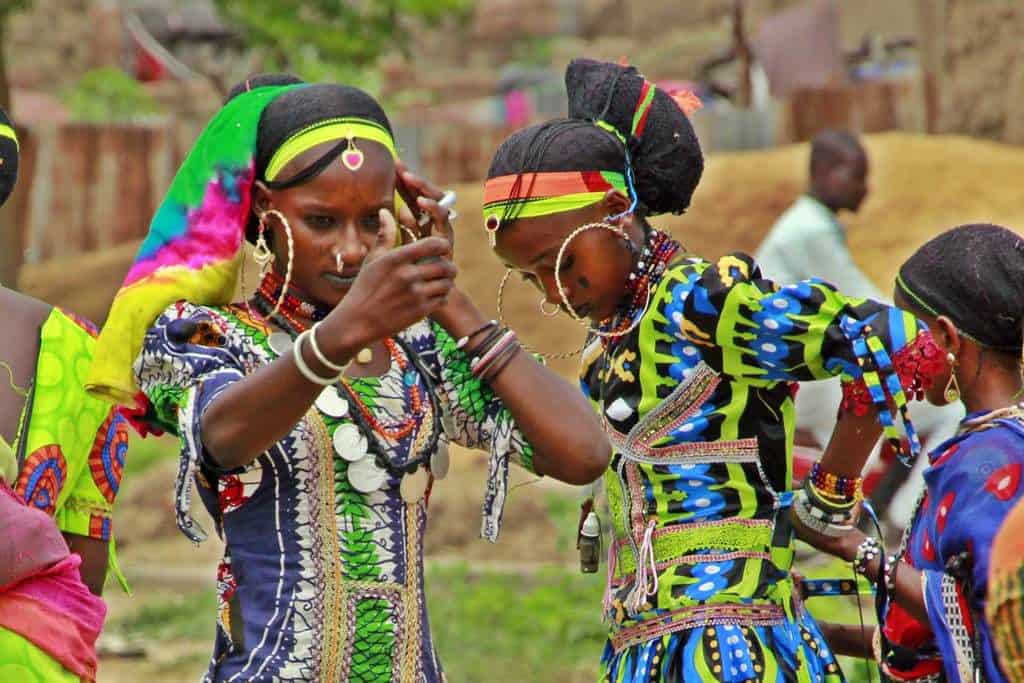
The women, typically aged between 13 and 15, are the silent judges. They observe the men from afar before making their selection, pointing to the man they find most attractive. The selected man is whisked away, and this moment could either lead to marriage, a night of passion, or nothing at all. The festival emphasizes freedom of choice and celebrates the beauty of courtship in a way that is both deeply traditional and universally relatable.
The Cultural Context: A Testament to Resilience
The Gerewol is more than just a display of beauty; it is a testament to the resilience and cultural pride of the Wodaabe people. Despite living in harsh environments where daily temperatures can soar above 40°C (104°F), the Wodaabe maintain their traditional way of life, untouched by globalization. Their rich cultural practices and communal spirit, as seen in the preparations for the festival, have remained largely intact.
The Gerewol also serves as a reminder of the importance of community and the shared responsibilities that come with it. Family members assist in preparing the men for the competition, from braiding their hair to offering encouragement and guidance. Elders play a crucial role in passing down the traditions and ensuring that the men uphold the values of patience, discipline, and perseverance.
Read: All you need to know about the Zulu Culture
The Unique Nature of the Chad Gerewol
While the Gerewol festival is also held in Niger, the Chad Gerewol is far less commercialized. Only recently opened to outsiders in 2011, the festival in Chad offers a more authentic experience. Unlike the Niger festival, which is often scheduled for tourists, the Chad Gerewol’s dates and locations are determined by the weather and the availability of grass for the Wodaabe’s cattle. This makes the event more intimate and reflective of the Wodaabe’s nomadic lifestyle.
How to Experience the Gerewol Festival in Chad
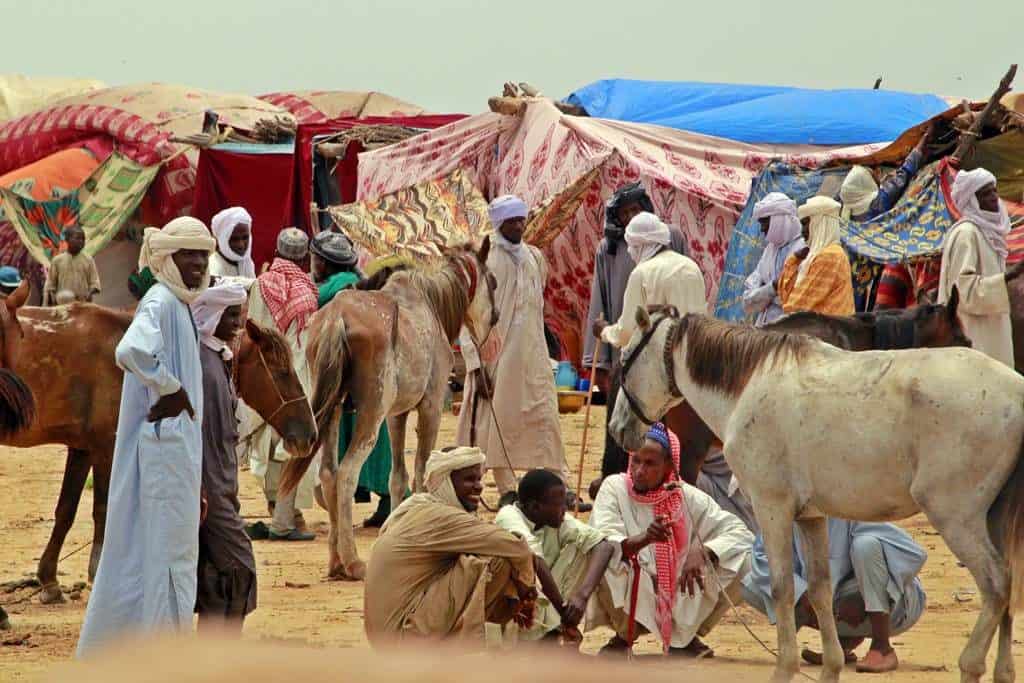
If you’re intrigued and want to witness this magical festival firsthand, attending the Chad Gerewol requires careful planning. The nomadic lifestyle of the Wodaabe means that the festival’s location and timing are not fixed in advance. Tourists need to be part of a guided tour, often led by local experts familiar with the region and the Wodaabe tribes.
The accommodations are rustic, with basic tents and communal dining spaces. The harsh desert conditions can be challenging, but the opportunity to immerse yourself in one of the world’s most unique and untouched cultures makes it all worthwhile.
The Gerewol festival is not just a fascinating glimpse into a rare and ancient courtship ritual; it’s a celebration of life, love, and the resilience of the human spirit. In a world where traditional customs are rapidly disappearing, the Wodaabe people’s commitment to their culture and values is both inspiring and admirable.
Whether it’s the hypnotic dance of Yakee, the vibrant display of beauty, or the communal preparation, the Gerewol festival reminds us that the search for love is universal—even in the desert.
Have you ever attended a cultural festival as unique as the Gerewol? Share your experience, or tell us which festival you’d love to witness in person!
